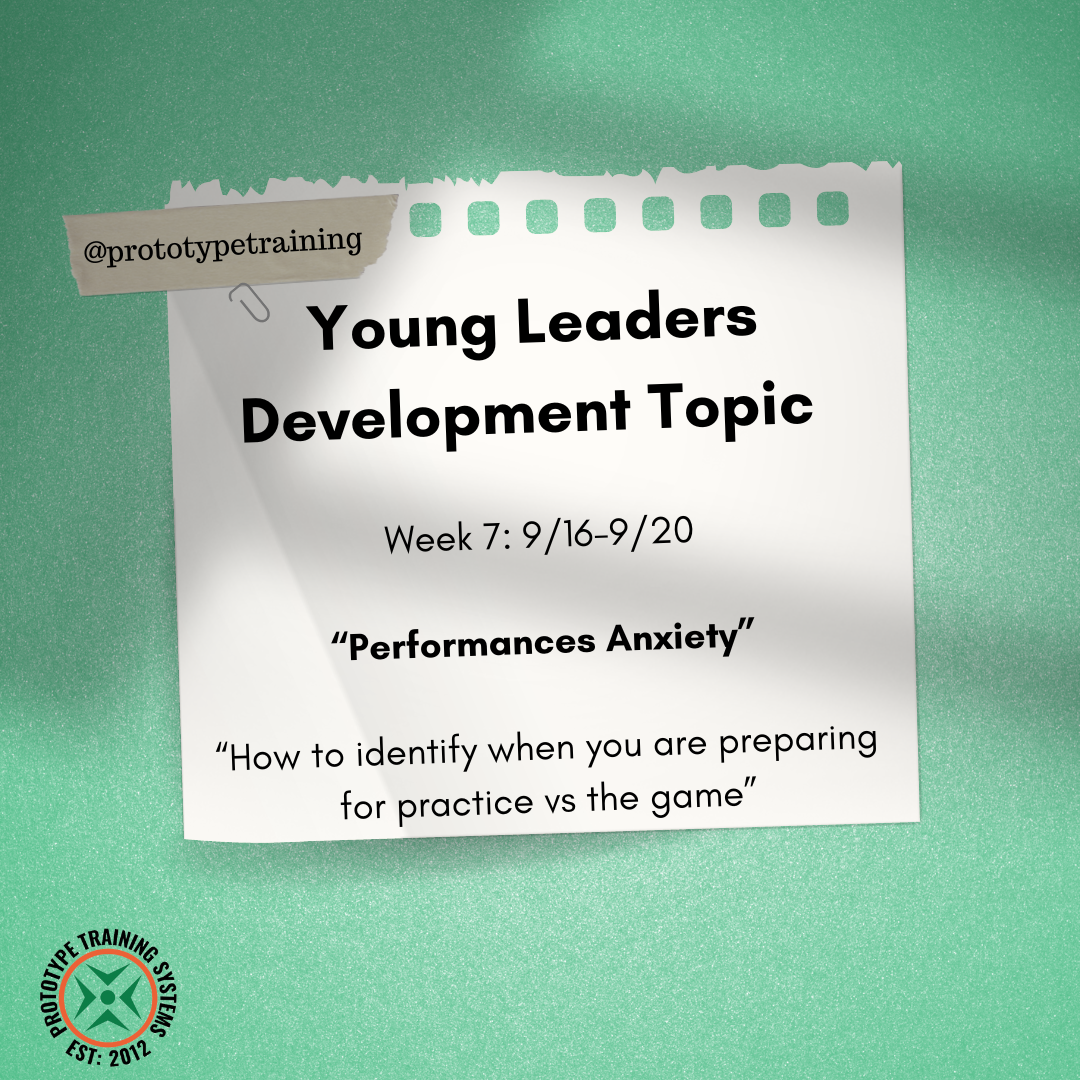
23 Sep, 2024
How to identify when you are preparing for practice vs the game This week, we talked with the kids about performance anxiety—a normal and even helpful response when the stakes are high, like in a big game or competition. Anxiety helps us focus and prepare, but the problem arises when we feel it in everyday situations, like practice or small tasks. This creates unnecessary stress and stops us from taking risks, limiting growth. Giving ourselves space for growth One of the kids shared how they felt anxious every time they had to write, no matter how small the task. Another talked about how practice felt as stressful as a real game because they didn’t want to make mistakes. We discussed how this mindset affects their ability to improve. When we treat practice or small activities like the high-pressure moments, we don’t give ourselves space to learn and grow. Practice in the parking lot before hitting the highway Our analogy for this week was learning how to drive. When you first start driving, you learn in a parking lot, not on the highway. The parking lot is a place to make mistakes, take risks, and build confidence through little wins. As we continue to gather those wins, we eventually feel ready for the highway—the big moments that require all we’ve learned. It’s okay to take risks in the parking lot because that’s where you grow the most, you are driving slower and there really isn't anything to hit. Below are pictures of the Westborough 7th and 8th grade girls' soccer team, with whom we focused on strength, stabilization, agility mobility, along with a lesson on performance anxiety in our Young Leader Development series. Caroline Queenan helped lead the session and shared her own experiences, which provided valuable insights and made the lessons even more relatable and beneficial for the players.

By Mike Collette
•
17 Sep, 2024
Combating Entropy for a Healthier, Longer Life: A Holistic Approach to Aging Introduction: The Concept of Entropy in Health Entropy, a concept rooted in thermodynamics, describes the natural movement from order to disorder. In the context of human life and health, entropy represents the gradual decline in physical and mental vitality that occurs as we age. Much like how an untended house collects dust, our bodies and minds naturally degrade if not actively maintained. However, this decline is not inevitable—through intentional, sustained effort, we can combat entropy and extend our healthspan, the period in which we live free from chronic disease and with full vitality. Entropy and Aging: A Natural Process Just as systems in nature tend toward disorder, the human body experiences entropy in the form of aging. Without conscious effort, the aging process brings physical decline, cognitive deterioration, and an increased risk of chronic diseases. However, while we cannot stop aging, we have the power to influence how we age. The real challenge is not just to live longer but to live better by actively engaging in habits that maintain and improve our health. Healthspan vs. Lifespan: The Fight Against Entropy Lifespan refers to the number of years a person lives, while healthspan focuses on the years lived in good health. In many developed countries, the average lifespan is around 77-80 years, but healthspan is significantly shorter, often around 60-63 years. This gap is where entropy does its damage—many people spend the final decades of life battling chronic illnesses and a reduced quality of life. The goal is to compress morbidity, shortening the period of illness before death, allowing for a longer healthspan full of vitality. Intentional Effort: A Proactive Approach to Health The key to resisting entropy is intentional effort, which includes regular exercise, mental fitness, proper nutrition, and recovery practices. But beyond simply following a routine, it's essential to cultivate internal motivation—transforming these habits from obligations into meaningful, enjoyable practices. When health and wellness become part of an individual’s identity, the fight against entropy becomes sustainable. Physical Activity: Regular exercise is one of the most effective ways to combat the physical aspects of entropy, improving cardiovascular health, muscle strength, and overall well-being. Mental Fitness: Engaging in challenges that test your comfort zone, learning new skills, or practicing mindfulness can stave off cognitive decline, fighting mental entropy. Nutrition and Recovery: Proper nutrition fuels the body, while recovery techniques, such as adequate sleep and stress management, ensure resilience against both physical and mental wear. The Role of Community: Battling Entropy Together Community is a powerful tool in the fight against entropy. Being part of a group with shared goals and challenges reinforces healthy behaviors and helps sustain motivation. Whether it’s participating in group workouts, sharing healthy meals, or supporting each other in mindfulness practices, a sense of belonging and collective effort can make it easier to maintain good health. Social interaction also has direct benefits for mental health, helping to reduce the risk of cognitive decline and conditions like Alzheimer's disease (Kuiper et al., 2015). Social Connections and Cognitive Health: Strong social networks lower the risk of dementia and other forms of cognitive decline. Research has shown that social isolation increases the risk of dementia by about 50%, underscoring the protective effect of community engagement (Kuiper et al., 2015). Conclusion: Embracing the Fight Against Entropy Entropy, while a natural process, challenges us to take proactive steps to maintain our health and vitality. By focusing on healthspan rather than just lifespan, we can embrace a lifestyle of growth and vitality. Through regular physical activity, mental engagement, supportive communities, and intentional effort, we can significantly slow down the entropy of aging, leading to a more fulfilling, healthier life well into our later years.
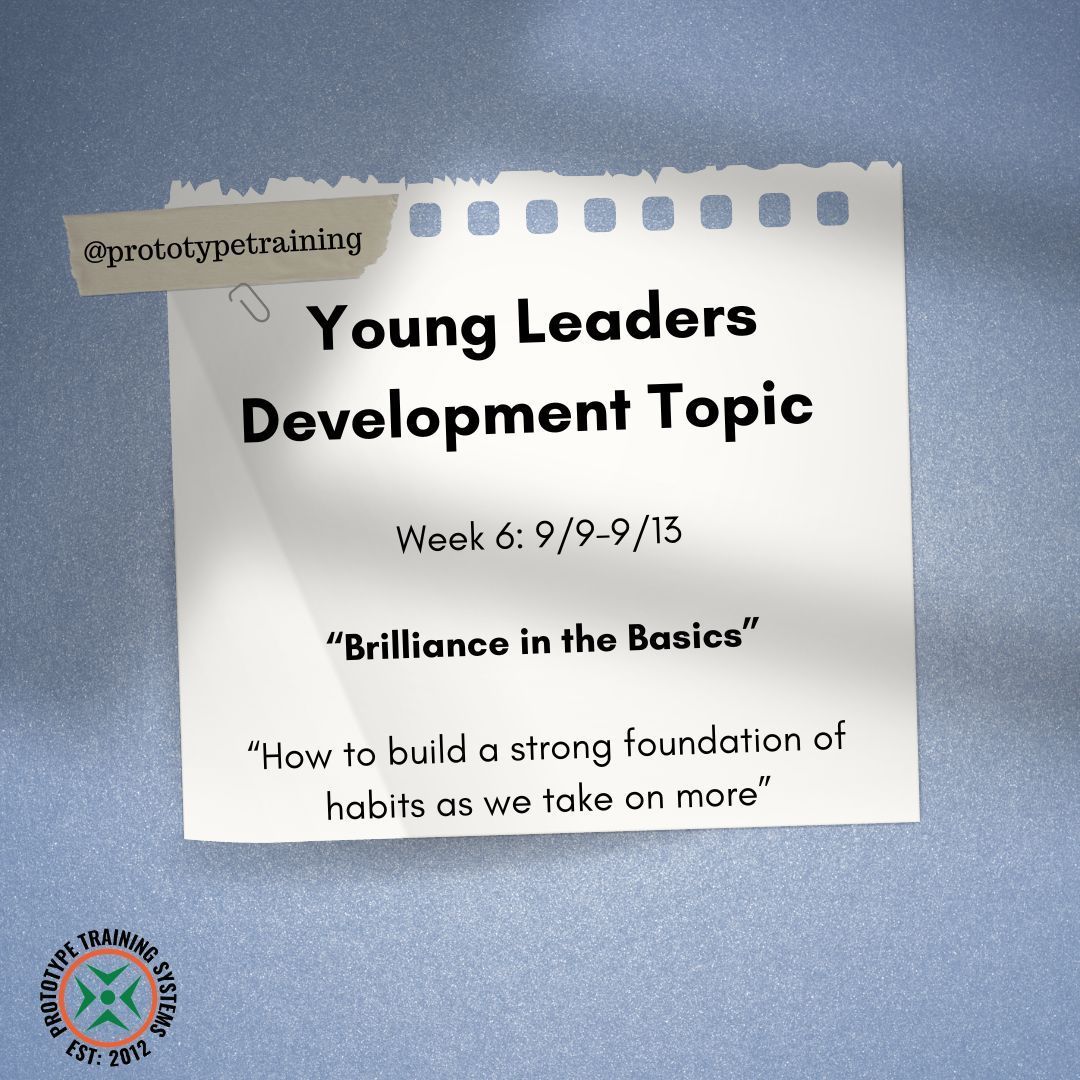
By Mike Collette
•
16 Sep, 2024
Week 6: How to Build a Strong Foundation of habits as we take on more This week, our lesson focused on "Brilliance in the Basics" and how building a strong foundation sets the stage for tackling bigger challenges. We took a deep dive into the importance of mastering fundamental skills by testing each student’s One-Rep Max in key lifts: the back squat, deadlift, and bench press. The students have been working diligently on these movements for some time. They started with the basics, progressively advanced their technique, and recently tested their One-Rep Max. The big takeaway for them was that all the effort spent perfecting these foundational movements led to personal records and significant progress. However, the lesson extended beyond strength training. We emphasized that the principles of building a strong foundation apply to every area of life. Whether it’s in academics, sports, or other challenges, investing time in mastering basic skills creates a solid base for tackling more complex tasks. The dedication to perfecting these fundamentals equips them to handle greater challenges with confidence and success. Consistency : An important aspect of this lesson was understanding that consistency is key. You can't afford to let up or allow the basics to slip, as doing so can undermine your progress. If you start neglecting the fundamentals, the whole structure can crumble beneath you. Maintaining focus and continually practicing these basic skills is essential to sustaining growth and achieving long-term success. To illustrate this, one student shared how practicing the violin consistently is crucial for mastering more complex pieces. Another mentioned how, in soccer, footwork and ball control are fundamental. Without attention to these basics, he struggles with executing advanced moves and making precise passes. These examples show that whether in music, sports, or other areas, a strong foundation is vital for taking on more challenging tasks. We also shared a compelling video with the kids featuring Nick Saban and Georgia's head football coach. In the video, both coaches emphasize to their teams how critical the basics are for achieving team success. This powerful message reinforced our lesson on the importance of focusing on the fundamentals in all areas of life. Link to video: https://www.instagram.com/reel/C_HJw4wN9_H/?igsh=cjB2MnFmazl1d2po It was a fun week, with the kids hitting a bunch of personal records. It was really cool to see their progress come together, with lots of smiles, high fives, and fist bumps all around.
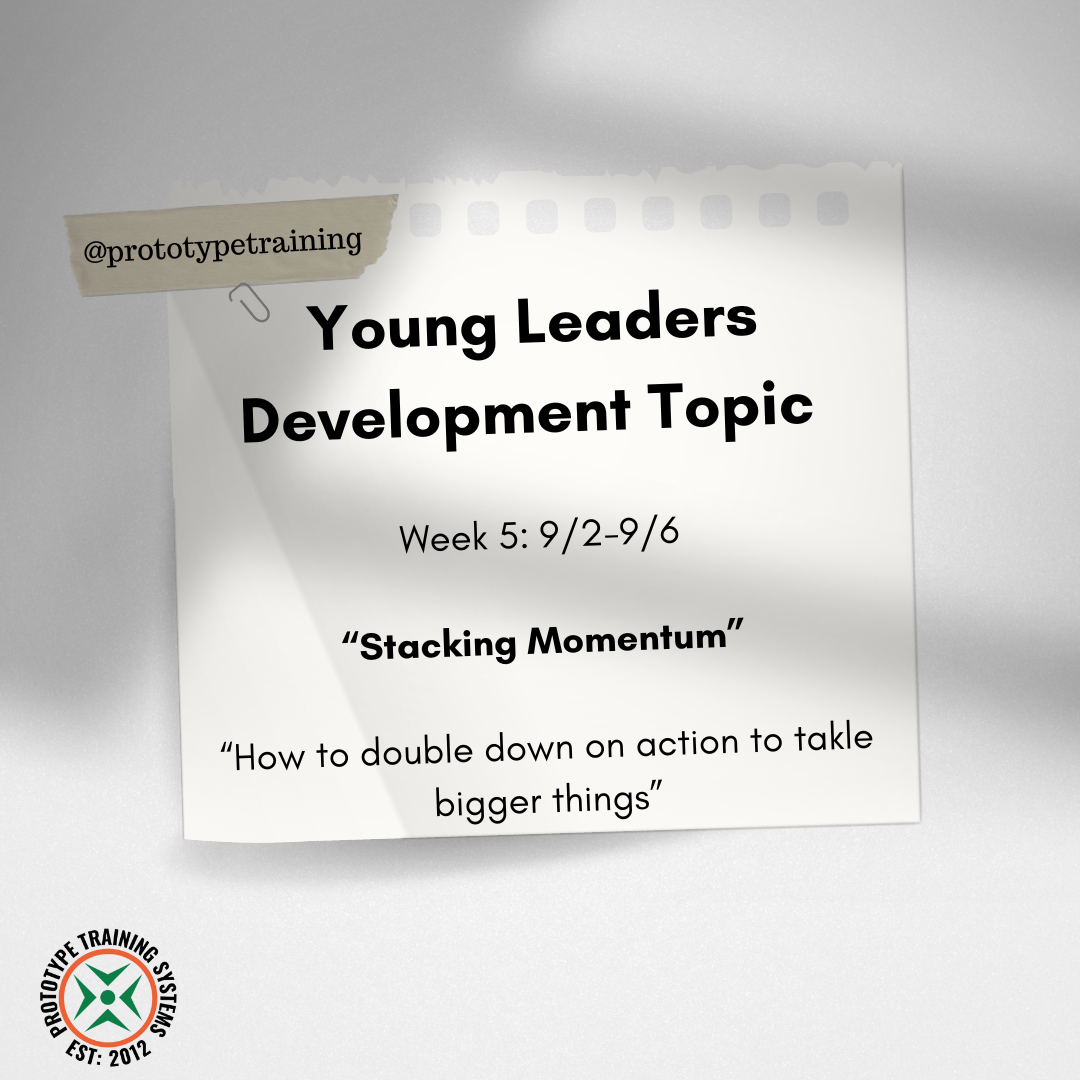
16 Sep, 2024
Stacking Momentum: How to double down on action to tackle bigger things Over the past two weeks in our Developing Youth Leaders lessons, we focused on building a bias to action and creating momentum. We then moved on to how to stack momentum and tackle bigger challenges. We began by asking the kids what tasks they needed to be told to do and which tasks they took on independently. We discovered that the kids were more willing to take on tasks like practicing their sports but struggled with things like schoolwork. One surprising response was practicing the violin. Through this lesson, we helped the kids identify areas where they were hesitant to take action and explored why. Building on last week's lesson, "Believing You Can Learn," we found that in areas where the kids were less confident or didn’t enjoy the activity as much, they were more hesitant to take action. While this isn’t surprising, making them aware of it helps them recognize where they might be stopping or slowing down, allowing them to tackle more challenging tasks. Leaning into Weakness We connected this to one of their workouts by allowing them to choose from 4 upper body movements and 4 lower-body movements. After picking their workouts, we discussed why they selected certain movements. All of them picked the movements they were stronger in, instead of leaning into weakness and improving. This approach helped them see how their decision-making could lead to hesitation and how leaning into their strengths can be a natural tendency. In the following week, we repeated the exercise, letting the kids design their own workouts. This time, we noticed that some kids chose different exercises that they knew they would struggle with. This exercise also provided an opportunity for them to receive more coaching and learn new movements. We then moved to the next week's lesson on "Stacking Momentum and Diving into Harder Challenges." We discussed the importance of maintaining momentum and pushing harder even after achieving a milestone. It’s a common tendency to want to take a break or celebrate after a significant accomplishment, but that’s precisely when it’s crucial to keep pushing forward. We explored how this applies in their lives and identified examples from sports where they felt confident and took on harder challenges. Our goal is to help them recognize that leaning into their strengths is natural, but it’s through tackling weaknesses and pushing past comfort zones that real growth happens. We’re proud of the progress they’re making and excited to see how they apply these lessons beyond the gym—in school, hobbies, and everyday life.
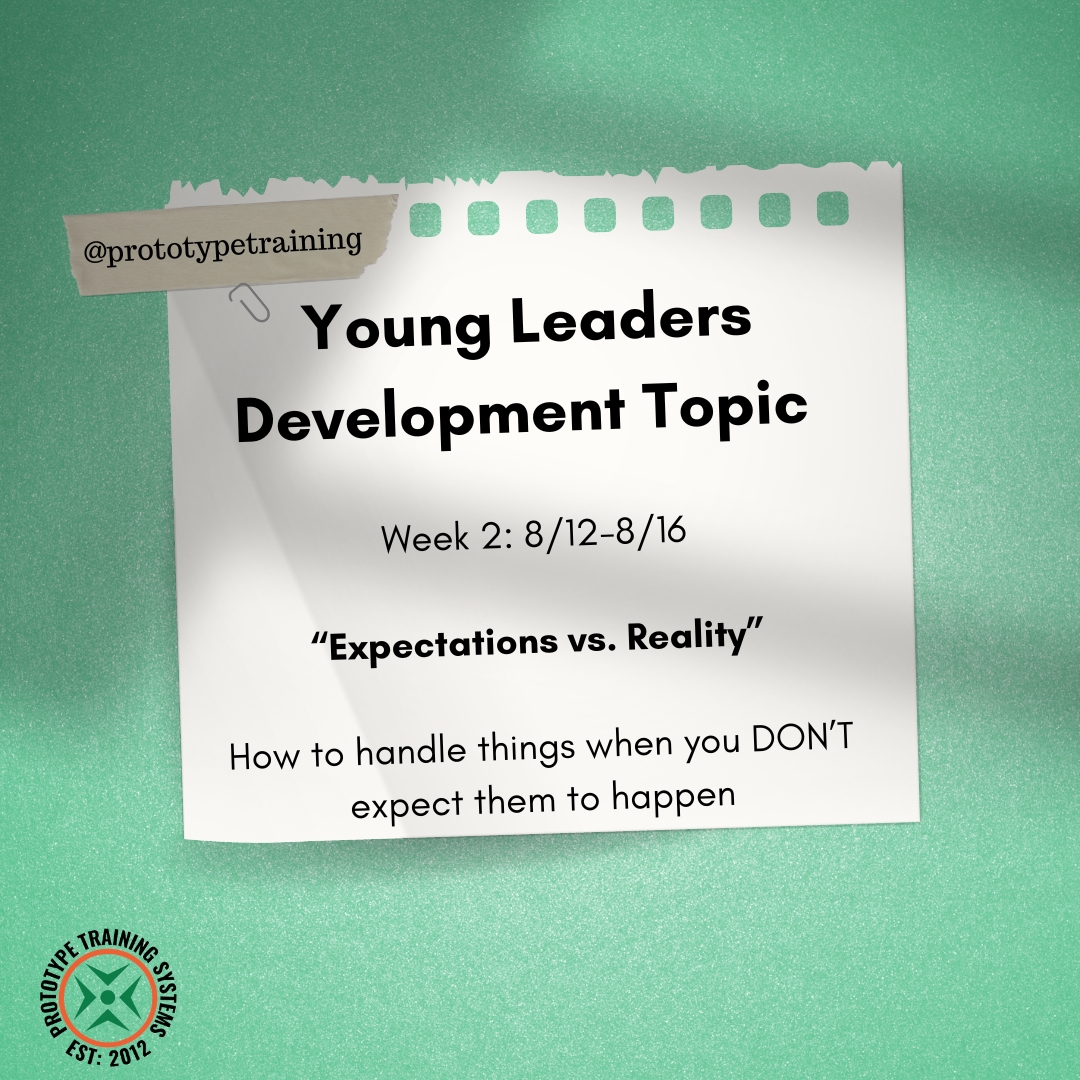
20 Aug, 2024
Developing Confidence to Acheive Our vision at Prototype is to not only help people live longer, better and more full filling lives, but to help people reach their full potential. As we continue to innovate on our approach to coaching, it's motivating to us to help not only our adult members but also our youth members/athletes become the best versions of themselves When most people hear performance training, they think of physical training getting faster, stronger more agile, but the mental side of training is often overlooked or not considered to be an important part of youth developing youth athelets. We see an ever growing need to help our youth members. The world is moving faster than ever, more information and false information at the tip of our fingers, studies showing kids have less meaningful relationships and social connections now more than ever, more kids suffering from mental health challenges (anxiety, depression, etc), physical activity has become less of a priority in schools, kids staring at a screen longer and more than ever before. This is a hard problem and why we have started to implement weekly lessons on the mental side with our youth athletes. The main focus will remain building stronger athletes but through the physical training, we will be incorporating lessons to build better/stronger kids/people. This will be the first email I will be sending you to update you on what we have been working on in our youth programs. This week's topic is Expectations vs Reality, many times we have had certain expectations going into a challenge or problem. This week we asked the kids for some examples when their expectations didn't meet reality. Some of the examples the kids have brought up were "Going into games and thinking your team is way better no way we can lose." "Or the opposite thinking there is no chance we win this game the other team is so good." "Thinking you know the material going into a test, so do not study as hard and then to realize you didn't know as much as you thought and get a bad grade" These are all good examples of when your expectations don't actually meet the reality of the challenge. What we discussed is first building better awareness if a challenge is “Hard mode” or “Normal mode” Easy Mode: Could do it in my sleep Normal Mode: Something I do regularly in my everyday life Hard Mode: I need to prepare (use my training) and think creatively We really like this framework, you can think selecting a difficulty mode in a video game, something the kids relate to. It helps you accept and acknowledge the challenge or problem you face. If you approach a Hard mode problem thinking you are playing in Normal mode a lot can go wrong. This is where have better awareness on where your expectation meet reality can payoff. If we approach a Hard mode challenge thinking it will be normal we won’t be prepared and can be caught off guard and this can shut us down or cause us to be less creative in our approach, thinking we can just do what we have done in the past and it will work out just fine. The opposite can be the case if we approach everything like its Hard mode when in reality its Normal mode it can cause us to waste a lot of energy when all we need to do is take some action and get into it. We will continue to update you on the lessons we are sharing with our youth athletes weekly. In the meantime Im curious on your thoughts?
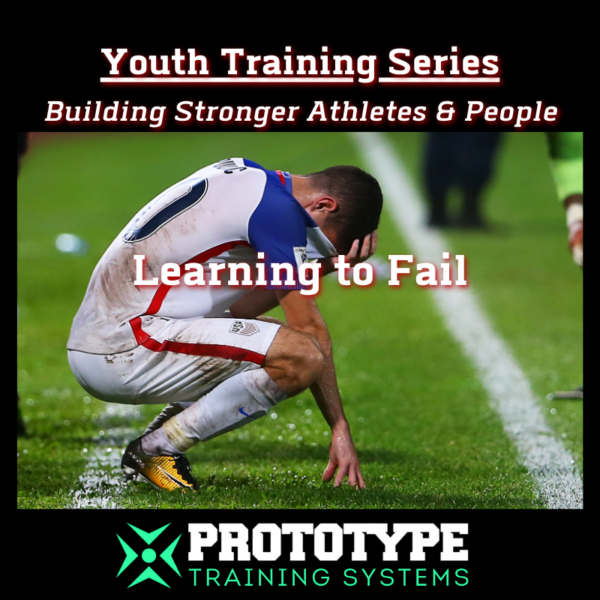
By Shay Knolle
•
23 Jul, 2024
Welcome to the first installment of our Long-Term Athletic Development (LTAD) program blog series! Each week, we’ll delve into different topics designed to help our young athletes grow not just physically, but also mentally and emotionally. Our goal is to cultivate well-rounded individuals who excel both on and off the field. This week, we’re focusing on a concept that’s vital to every athlete’s journey: embracing failure. The Role of Failure in Growth Failure is often seen as something negative, something to be avoided at all costs. However, failure is an essential part of the process of getting better. It’s through our failures that we learn the most valuable lessons and make the most significant strides toward our goals. When we push ourselves, we inevitably encounter setbacks. These moments can be frustrating and disheartening, but they are also opportunities for growth. By facing and overcoming failures, we build resilience, improve our skills, and gain a deeper understanding of our strengths and weaknesses. Unconscious Avoidance of Failure Sometimes, without even realizing it, we avoid situations where we might fail. This unconscious avoidance can freeze us in our tracks, preventing us from pushing our hardest and achieving our full potential. It’s crucial to become aware of these tendencies and actively challenge ourselves to step out of our comfort zones. Avoiding failure might feel safe in the short term, but it limits our growth and hinders our progress. By recognizing when we’re holding back due to fear of failure, we can take steps to confront these fears and embrace the challenges that come our way. The Speed of Recovery: A Trainable Skill How quickly we recover from failure and try again is a trainable skill. This week, we will be working with our athletes to develop this crucial ability. Not only will we place them in environments where they might fail, but we will also guide them through the process of quickly reflecting on their experience and trying again. Rapid recovery from failure involves: Immediate Reflection: Quickly understanding what went wrong. Best to share with someone – this builds self-awareness Actionable Adjustments: Making small, changes to improve. We do not want to try the same thing over and over but also don’t always need to start from scratch Resuming Effort: Getting back into the task (the hardest part). By practicing these steps, our athletes will learn to bounce back faster, maintain their momentum, and build the resilience needed to handle challenges more effectively. Learning from Failure In youth sports and even in school, there is often a significant emphasis on success and achievement. While striving for excellence is important, this focus can condition young athletes to fear failure and avoid taking risks. This avoidance can stunt their growth and limit their potential. Consider these quotes from our athletes: “I remember when the mental side of soccer got to me. The fear of failing froze me up on the field. I just wanted to stop playing.” “There was a game where we were so much better than the other team, and we lost. We didn’t know how to handle it. It’s really hard to bounce back when you were expected to win and lost.” “One of my teams hasn’t won a game in 3 years. It’s tough. We don’t know how to win.” These experiences highlight how the fear of failure and high expectations can paralyze young athletes, causing them to avoid risks and miss out on opportunities for growth. This can be especially prevalent in school, where the pressure to achieve high grades and meet expectations can lead students to avoid challenging subjects or activities where they might not excel immediately. The Journey Ahead As we kick off this blog series, remember that the road to excellence is paved with challenges and failures. By embracing these moments and learning from them, our young athletes will develop the resilience, discipline, and mental toughness needed to achieve their full potential. We look forward to sharing more insights with you in the coming weeks. Stay tuned for next week’s topic. Until then, let’s embrace the journey, learn from our failures, and celebrate the small victories along the way. Steve Cimino
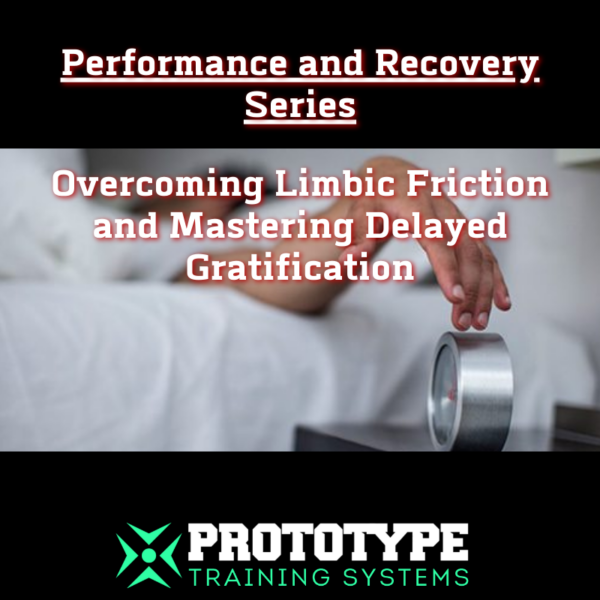
By Shay Knolle
•
23 Jul, 2024
Staying motivated to hit the gym regularly and push through tough workouts can be challenging. Whether it’s the temptation to stay in bed or the urge to skip that last set, we all face internal battles that test our commitment. Neuroscientist Andrew Huberman offers powerful insights into the concepts of limbic friction and delayed gratification—two critical components that can transform your approach to fitness and help you achieve your goals. What is Limbic Friction? Limbic friction is the resistance you feel when trying to take action, especially when that action goes against your immediate comfort or desires. It’s that inner voice telling you to hit the snooze button instead of heading to the gym or to grab a snack instead of sticking to your meal plan. This friction originates in the limbic system, the part of your brain responsible for emotions and behavior. Top-Down Control and Limbic Friction To overcome limbic friction, you need to engage “top-down control.” This cognitive process is managed by the prefrontal cortex, the brain region that allows you to override immediate impulses in favor of long-term goals. Every time you push yourself to go to the gym despite feeling tired, you’re using top-down control to overcome limbic friction. Dopamine and Reward Anticipation Dopamine, a neurotransmitter associated with pleasure and motivation, plays a crucial role in delayed gratification. Surprisingly, dopamine is released not just when you achieve a goal but also when you’re on the path to achieving it. This means the anticipation of future success—like the sense of accomplishment after a great workout can motivate you in the present. When you practice delayed gratification, you train your brain to associate effort and discipline with positive outcomes. This shift in perception helps you overcome limbic friction, as your brain starts to anticipate the dopamine rush associated with future success. Cold Plunge Example Huberman explains how immersing yourself in a cold plunge can significantly boost dopamine levels—up to 2.5 times higher—similar to the effects of certain drugs but with longer-lasting benefits. The anticipation of relief and accomplishment after enduring the cold plunge can help you push through the initial discomfort. This concept can be applied to your workouts: find activities that provide a substantial dopamine boost to train your brain to link effort and discomfort with positive outcomes. Watch the video: HERE Using Workouts to Train Top-Down Control and Overcome Limbic Friction Your time at the gym is a perfect opportunity to train your ability to overcome limbic friction and master delayed gratification. Engaging in regular, challenging workouts forces you to exercise top-down control consistently. Each time you push through a tough session, you’re not only building physical strength but also enhancing your mental resilience. The act of starting and completing a workout, despite feeling tired or unmotivated, strengthens your ability to override immediate impulses in favor of long-term benefits. Similarly, incorporating a cold plunge into your routine can be an effective way to train top-down control. The initial shock and discomfort of the cold water require you to summon mental fortitude to stay immersed. As you endure the cold, your body releases dopamine, rewarding you with a sense of accomplishment and relief afterward. This experience reinforces the connection between enduring short-term discomfort and achieving a rewarding outcome, making it easier to apply this mindset to other areas of your fitness regimen. By regularly pushing through challenging workouts and incorporating practices like cold plunges, you train your brain to associate effort and discomfort with positive results. Over time, this makes it easier to overcome limbic friction, stay motivated, and consistently work towards your fitness goals. Embracing these strategies can transform your approach to fitness, helping you unlock your full potential and achieve lasting success in the gym. Conclusion Limbic friction and delayed gratification are not insurmountable obstacles but trainable skills that can be developed with practice and perseverance. By understanding the neurological mechanisms at play and implementing strategic practices in your workouts, you can enhance your ability to stay motivated, achieve your fitness goals, and unlock your full potential. Embrace the journey of mastering these skills and watch as you transform your approach to fitness and success in the gym.

By Shay Knolle
•
23 Jul, 2024
We are thrilled to welcome Marissa to the Prototype Training Systems team! With an impressive background in health, fitness, and wellness, Marissa brings a wealth of knowledge and experience to our gym community. Marissa holds a Bachelor’s in Health Science and a Master’s in Public Health from Boston University. Her passion for fitness and health is further backed by her certifications as a NASM-certified personal trainer, with additional specializations in Nutrition and Health coaching. From a young age, Marissa’s life has been intertwined with movement. She danced competitively throughout high school and continued her dance journey with BU’s Dance Theater Group in college. After college, Marissa’s love for movement evolved as she took on new challenges as an aerialist and runner. To date, she has completed 14 half marathons and 3 marathons, with an inspiring goal to run a half marathon in every state. She is currently training for the 2024 NYC marathon. Marissa’s passion for fitness extends beyond her personal achievements. For the past decade, she has been dedicated to teaching dance to youth ages 2-18. Additionally, she has made her mark as a ninja warrior coach, leading both recreational and competitive classes, and coaching athletes at local, regional, and national competitions. Marissa previously worked at the Hockomock Area YMCA as their director of community wellness, where she oversaw youth programming aimed at helping kids and their families live healthier lives. At Prototype Training Systems, Marissa will be coaching CrossFit classes and personal training sessions. She will also be leading our fundamentals classes, focusing on youth training and development. Join us in welcoming Marissa to Prototype Training Systems! Stop and say hi to her the next time you see her in the gym.

By Mike Collette
•
21 Jun, 2024
Prototype Performance and Recovery Series: Part 8 Why we get sore: The Science of Soreness: Understanding Muscle Pain and Adaptation As we progress with Prototype Performance and Recovery, it’s on our mind to continue to educate all of our members and give our insights into why recovery matters . As I was discussing what topics
The post Prototype Performance and Recover Series Part 8: Why we get sore appeared first on Prototype Training Systems.
Climb to New Heights
Prototype Training Systems is more than a gym - it is a lifestyle. Join us today!
Book a free no-sweat intro session. Your coach will give you the best recommendation and program for your goals.
Sign up and start your journey at Prototype!
Quick Links
Contact Us
50 East Main St, Unit 1, Westborough, MA 01581

